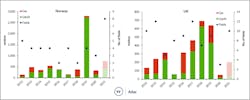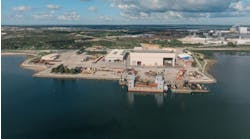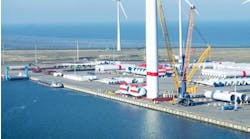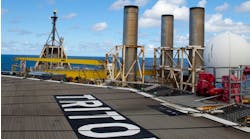Offshore staff
LONDON – Investment in the UK and Norwegian offshore sectors should rise next year, according to Westwood Global Energy Group, with exploration potentially recovering to 2019 levels.
On the UK continental shelf, production looks set to fall slightly to 1.64 MMboe/d, due to operators this year deferring maintenance work (such as the Forties Pipeline System in the UK central North Sea).
While only three small fields came onstream this year, the total should climb to 10 in 2021, with reserves of around 200 MMboe, and 15 fields should progress toward project sanction (total reserves of around 375 MMboe).
This could raise UK production in 2022 to 1.71 MMboe/d.
Next year, Emma Cruickshank, Westwood’s Head of NW Europe, expects total UKCS field development capex of $4 billion, up from $3.8 billion in 2020. This is partly due to work deferred this year being pushed to 2021, such as completion of the Tolmount and Finlaggan projects.
Producing fields are set to account for 57% of capex, fields under development 27%, with the remaining 15% associated with fields heading for sanction in 2021.
As for UK offshore decommissioning, 33 companies will likely spend a total of $1.5 billion on decommissioning 29 hubs in 2021, with Shell, ExxonMobil, Repsol Sinopec, Premier Oil, and TAQA accounting for around 50% of this sum.
In Norway, Westwood expects production of 4.18 MMboe/d next year, rising in 2022 as field start-ups approach full production. Eight greenfield projects should come onstream with combined reserves of around 760 MMboe, making 2021 potentially a record year for field start-ups on the Norwegian continental shelf.
Five field developments could also be sanctioned, with combined resources of around 295 MMboe.
Westwood forecasts slightly higher field development capex of $14.8 billion offshore Norway next year, around 75% of which will be allocated to the North Sea, 15% in the Norwegian Sea and 10% in the Barents Sea.
Around 80% of capex commitments will be directed to producing fields and 20% to others under development, plus new project sanctions.
In the UK, exploration activity in 2020 was 70% lower than anticipated at the start on the year, and activity was also lower offshore Norway as companies cut costs and deferred wells.
Results from wells that did drill were good: Cruikshank expects 26 Norwegian and five UK exploration wells to be completed in 2020, with 10 commercial discoveries in Norway and two in the UK, delivering around 500 MMboe.
Next year more than 50 exploration wells could be drilled across the two countries’ continental shelves, targeting close to 4 Bboe, and these include 15 high-impact prospects with potential resources of more than 100 MMboe (13 offshore Norway and two in the UK).
Equinor looks set to be Norway’s most active explorer in 2021, participating in around 15 exploration wells and targeting 485 MMboe of net pre-drill resources. Lundin Energy is targeting the most net pre-drill (570 MMboe), followed by Neptune Energy, Aker BP, Sval Energi, and Petoro (all more than 200 MMboe).
Among divestments to watch for will be ExxonMobil’s sale of its non-operated interests in the UK northern and central North Sea, comprising 24 fields with 127 MMboe in remaining reserves (as of Jan. 1, 2020) and 2020 forecast production of 38,600 boe/d.
12/18/2020




